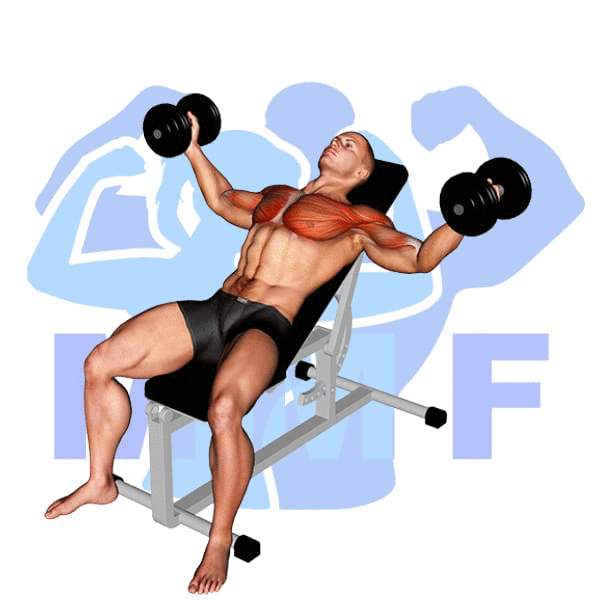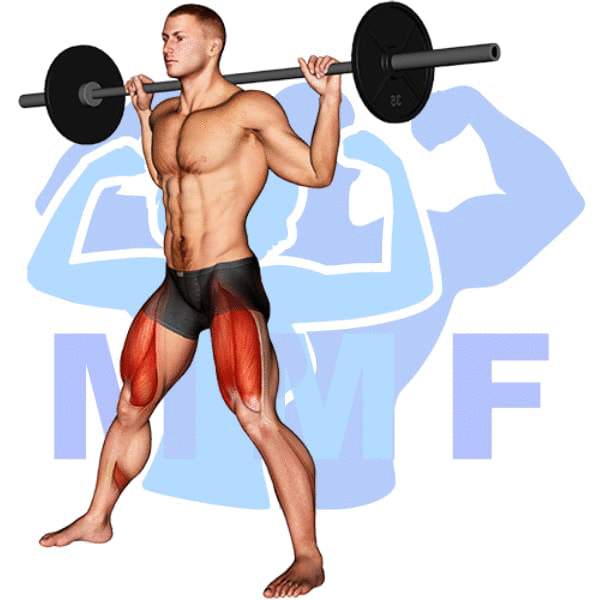Are you struggling to build a strong chest despite putting in hours at the gym? Perhaps, you have been ignoring the importance of cable chest press, which is a common mistake made by many fitness enthusiasts. Don’t worry; you are not alone in this. The chest is one of the trickiest muscles to strengthen, and the classic bench press can only go so far. The good news is incorporating cable chest press exercises into your workout routine can transform your chest game. In this blog post, I will guide you through the proper form of cable chest press and how to incorporate it into your routine for maximum results.
Cable Chest Press Summary
- Primary Muscles: Pectoralis Major – Sternal
- Secondary Muscles: Deltoid – Anterior, Pectoralis Major – Clavicular, and Triceps Brachii
- Equipment: Cable Machine with Two Single D-Handles
- Mechanics Type: Compound
- Force: Push
- Utility: Basic or Auxiliary

Cable Chest Press Instructions
- Start by sitting on the seat with your back to the stack and grasp handles on each side.
- Next, raise your elbows out to your sides, slightly lower than shoulder height.
- Now bring your hands in slightly inside your elbows in front of your upper arms.
- Push the handles out straight until your arms are straight and parallel to each other.
- Then return handles to your starting position. You should feel a slight stretch in your shoulders or chest.
- Repeat for a complete set.
Video Tutorial
Cable Chest Press Muscles
Target (Agonist)
- Pectoralis Major – Sternal
Synergists
- Deltoid – Anterior
- Pectoralis Major – Clavicular
- Triceps Brachii
Dynamic Stabilizers
- Biceps Brachii – Short Head
Stabilizers
- Pectoralis Minor
- Serratus Anterior
Antagonist Stabilizers
- None

Benefits of Cable Chest Press
The cable chest press is a great exercise for targeting the muscle Pectoralis Major – Sternal. This exercise provides a good range of motion and isolation of the muscle to ensure optimal results. The cable chest press works the pectoral muscles in a horizontal plane, which is important for stability and strength. Additionally, the cable chest press engages all the fibers of the pectoral muscle, making it a great exercise for targeting chest strength and size. With this exercise, you can also use heavier weights compared to other chest exercises, allowing you to get a more intense workout. Lastly, the cable chest press helps reduce the risk of shoulder injury, as it reduces the stress on the shoulder joint.
Tips for Performing Cable Chest Press
If you’re seeking to take the cable chest press to a new level, then you’ve come to the right place. These tips can get you more from of this effective workout, while helping you receive all the benefits it has to give. You will develop your chest muscles, and even lower your chances of experiencing an injury. Let’s get started and take a look at how these tips will benefit you.
- Set the Weight Appropriately: Start with a light weight and adjust as necessary to ensure proper form and reduce the risk of injury. This will help you develop strength and muscle size in a safe way.
- Keep Your Hands in Line with Your Shoulders: Make sure your hands are in line with your shoulders when you press the weight forward, to get the most out of the exercise and avoid any strain.
- Use a Full Range of Motion: Make sure to extend your arms fully to get the most benefit from the exercise, as this will help you build muscle and increase flexibility.
Benefits and Tips Video
Frequent Mistakes To Avoid
When it comes to conducting cable chest press, avoiding common errors is usually the difference between a productive workout and a debilitating injury. Additionally, achieving optimal results from this exercise requires proper form, and avoiding make any typical mistakes can help you to perform the exercise correctly and obtain optimal results. Not only can avoiding these mistakes make you stronger, but also can assist in you feeling more assured and inspired when at in the gym. So it is time for you to maximize your results from this exercise and enjoy the benefits of a productive workout.
- Not using the correct weight: Using too much or too little weight can lead to injury or not working the muscles correctly.
- Not using proper form: Incorrect form can lead to injury and prevent the user from getting the full benefit of the exercise.
- Not taking breaks: Taking too long of breaks can cause fatigue and diminish the effectiveness of the exercise.
Find More Cable Exercises Here
Variations and Complementary Exercises
There are several variations, complementary, and alternative exercises for the Cable Chest Press that target similar muscles and can be used to supplement your chest workout. The following list outlines some of the exercises that you can use to mix up your routine and challenge your muscles in new ways.
Barbell Wide Bench Press

The Barbell Wide Bench Press is an effective exercise for targeting the chest muscles. It is a great complementary exercise to the Cable Chest Press as it allows you to use heavier weights and increases the range of motion. This exercise also allows you to work on different angles, which can help strengthen the chest muscles in different ways. The Barbell Wide Bench Press also helps increase overall strength and stability, making it an ideal alternative exercise to the Cable Chest Press.
Dumbbell Bench Press

The Dumbbell Bench Press is an excellent complementary or alternative exercise to the Cable Chest Press. It can be used to target the chest muscles in a similar way to the Cable Chest Press but with slightly different angles and range of motion. The Dumbbell Bench Press allows for a greater range of motion than the Cable Chest Press, and can be used to hit both the upper and lower chest muscles. This exercise can also be done with greater control, since the weight is evenly distributed in both hands and the user can adjust their grip on the dumbbells to customize the exercise for their own strength level. In addition, the Dumbbell Bench Press can be done from multiple angles, allowing for even more variety in your chest workout.
Decline Dumbbell Bench Press

The Decline Dumbbell Bench Press is a great alternative or complementary exercise to the Cable Chest Press. It is a compound exercise that works the chest, shoulders, and triceps. It can be performed with a set of dumbbells, or with a barbell. This exercise increases muscular strength and size in the upper body. It also requires greater stabilization than the Cable Chest Press, which adds a challenge to the exercise. The Decline Dumbbell Bench Press is an effective exercise for developing chest strength and size.
Check Out These Top Cable Exercises
Barbell Wide Reverse Grip Bench Press

The Barbell Wide Reverse Grip Bench Press is a great complementary or alternative exercise to the Cable Chest Press. This exercise targets the chest, shoulders, and triceps muscles, and is performed by lying on a bench with a wide, reverse grip on the barbell. The lifter pushes the barbell up from the chest and lowers it back down in a controlled manner. This exercise helps to strengthen the chest, shoulders, and triceps muscles and provides more variety to your chest workout routine.
Barbell Reverse Grip Decline Bench Press

The Barbell Reverse Grip Decline Bench Press is a great exercise for targeting the chest muscles and is especially effective for those looking to build strength in their lower chest. It is a complementary exercise to the Cable Chest Press, as it allows you to work the same muscles from a different angle. This exercise places a greater emphasis on the lower chest, which can help to create a more balanced and symmetrical physique. The Barbell Reverse Grip Decline Bench Press also allows you to use heavier weights, as you are supported by a bench, which can help increase your overall strength.
Barbell Guillotine Bench Press

The barbell guillotine bench press is a great complementary or alternative exercise to the cable chest press. This exercise involves lying on a flat bench while holding a barbell with a narrow grip above your chest. As you lower the weight, your elbows should be tucked in close to your body and the bar should be lowered to the middle of your chest. The movement should be done in a controlled manner and you should press back up to the starting position. This exercise targets the same muscles as the cable chest press but puts more emphasis on the lower chest. It is also an effective way to increase strength and power in your upper body.
Find More Chest Exercises Here
Opposing Complementary Exercises
In order to maximize the benefits of the Cable Chest Press, it is important to include complementary exercises that work the opposing muscle groups. Below is a list of exercises that focus on strengthening and toning the muscles that oppose those used during the Cable Chest Press.
Lever High Row (Machine)

The Lever High Row (Machine) is an excellent complement to the Cable Chest Press exercise. It works the opposing muscle group of the chest, the back muscles. This machine is designed to target the back muscles, specifically the lats and traps, by simulating a rowing motion. The Lever High Row utilizes a system of pulleys and weight plates to provide resistance to your back muscles as you pull the bar towards your chest. This exercise can be performed with either a narrow or wide grip, allowing for maximum back muscle engagement. By incorporating this exercise into your workout routine, you will be able to strengthen and tone your back muscles, giving you a well-rounded workout experience.
Seated V Bar Cable Row

The Seated V Bar Cable Row is a great complement to the Cable Chest Press exercise because it targets the opposing muscle group. This exercise works the upper and middle back, as well as the biceps, by using the pulley system of the cable machine. The Seated V Bar Cable Row helps to strengthen the muscles that the chest press does not target, such as the rhomboids and trapezius, as well as developing better posture and shoulder stability. This exercise also helps to even out any imbalances between the chest and back muscles, which can reduce the risk of injury.
T Bar Supported Reverse Grip Row

The T Bar Supported Reverse Grip Row is a great exercise to pair with the Cable Chest Press. It targets the opposing muscle group of the chest, the back. This exercise will help to strengthen and stabilize the shoulder muscles, while also improving posture. It is a great way to balance out the Cable Chest Press, as it works the back muscles in an opposite motion. This will help ensure that both sets of muscles are being adequately exercised for optimal results.
Get Ripped with Cable Chest Press
Looking to add some serious muscle to your chest? The cable chest press is an effective exercise that targets multiple areas of your chest, as well as your triceps and shoulders. By using cables, you’re able to maintain constant tension on your muscles throughout the movement, which can lead to better gains over time. Plus, the adjustable resistance of the cables allows you to easily increase or decrease your weight, making it a versatile exercise for any fitness level. Give the cable chest press a try and see the results for yourself!
References: Wikipedia | ExRx.net | PubMed.gov | Comprehensive List of Chest Cable Exercises




